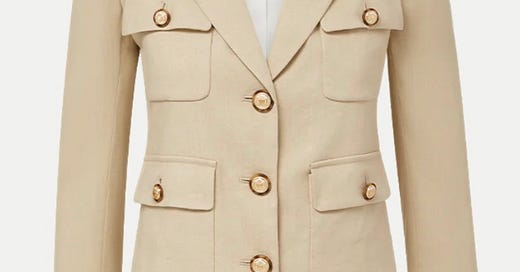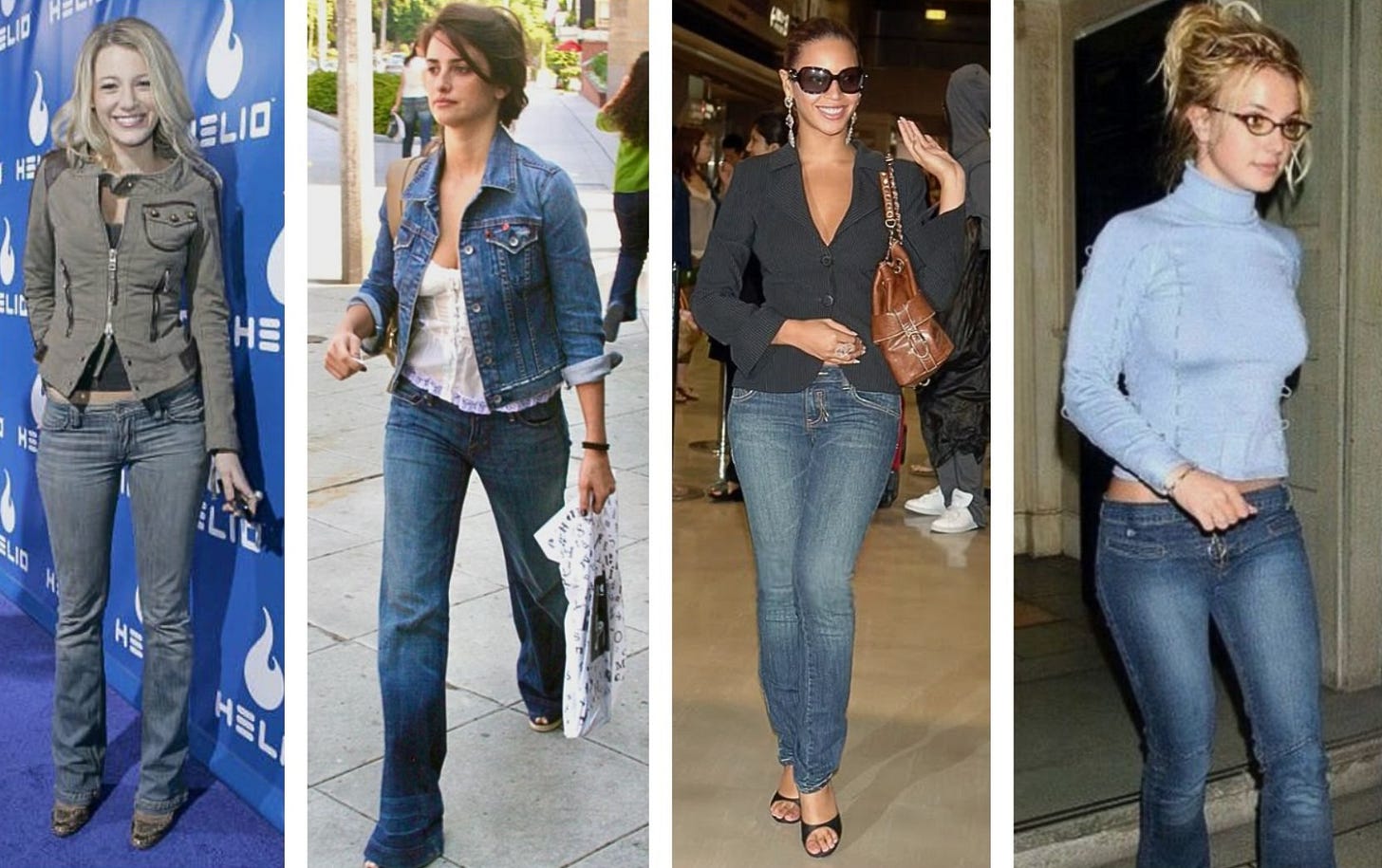SS 40: Rethinking Business Casual: From Confusion to Strategy
What does “business casual” even mean anymore? Let’s unpack it. Where it started, how it’s evolved, and most importantly, where we go from here.
While speaking at a recent Women’s Conference, a VP from DirecTV pulled me aside and said:
“Susana, I find ‘business casual’ really confusing. I’m never quite sure what’s appropriate. And to make it harder, some of my younger team members don’t seem sure either. One shows up in a hoodie, another looks like she’s headed out for the night. I’m stuck in the middle, wondering what to say or how to set the tone. Can you help me make sense of it? For myself and my team?”
That moment stayed with me because I hear versions of this conversation all the time. From women navigating leadership, culture, and visibility.
Let’s take a quick walk through history to explain how we arrived at this vague and often frustrating concept. And how we can move forward with clarity and intention.
A Brief History of Office Dress Codes
In the 1950s, officewear for women was strictly formal: stiletto heels, stockings, neatly tailored dresses. Every single day. Style was sharp, but rigid.
The 1960s brought a subtle shift. Inspired by the polished elegance of the Kennedy era, silhouettes became more relaxed outside the office, but professional settings still expected skirts or dresses. The pressure to conform lingered, even as culture began to change.
The 1970s marked a turning point. Women started to push boundaries, trading skirts for pants, even as rules remained tight. It wasn’t until 1973 that the White House officially allowed female staff to wear slacks to work. (President Nixon, reportedly, wasn’t thrilled.) Congress didn’t catch up until the mid-1990s.
Then came the 1980s: bold colors, sharp tailoring, exaggerated shoulders. Power dressing became a visual declaration less about personal style, more about saying: “I belong at the table.”
By the 1990s, Silicon Valley was reshaping work culture and with it, the dress code. Power suits softened. And for men, a new term entered the workplace: business casual.
In the 2000s, business casual gained real traction. Women’s professional wardrobes became more relaxed. Form-fitting suits, minimalist silhouettes, and sleeker lines replaced the structured power suits of earlier decades. Casual Fridays introduced denim into the workplace, blurring the line even further between “office appropriate” and “off-duty.”
By the 2010s, dress codes for professional women grew even looser. Jeans were widely accepted as part of business casual, and accessories like statement heels, bold bags, or a sharp jacket became the defining tools for polishing an otherwise informal look.
Then came March 13, 2020. Overnight, the world went virtual. Boardrooms became Zoom rooms. Dress codes followed suit: “business on top, comfort on the bottom” became the norm. A blouse, yoga pants, slippers, camera on. That was the look.
And here we are: 2025. Offices are back. Travel is thriving. Conferences are in full swing. But what about the dress codes? Still murky. Still unsettled. Looser and more confusing than ever.
The Birth of Business Casual
Business casual emerged in the early 1990s, first through men’s workwear. It started as a Friday-only policy meant to encourage camaraderie between upper management and employees. By loosening the formality, companies hoped to foster connection. Out went the suits. In came the khakis and polos.

In 1992, Dockers heard of this and spotted an opportunity. They mailed 25,000 HR managers a pamphlet called A Guide to Casual Business Wear, encouraging companies to adopt this more relaxed dress code.
The campaign was a hit. Sales soared. Business casual took hold fast.
But here’s the thing: No one wrote the handbook for women.
The Memo Wasn’t for Us
We received the policy, but not the manual.
The Dockers guide didn’t mention skirts, heels, handbags, or the realities women face daily: pregnancy, postpartum, menopause, cultural expectations, or the double standards in how leadership is perceived.
And yet, we were expected to interpret the dress code, show up polished but not too polished, visible but not too visible.
That’s where the tension lives. And that’s where I want to offer you a new perspective and path forward.
Let Me Offer You a Metaphor
Imagine someone tells you to “make a special meal” but hands you only three ingredients, no spices, and zero context. You don’t know who you’re cooking for, what the occasion is, or where it’s being served.
Could you make something? Probably.
Would it be memorable? Not likely.
That’s business casual today: vague guidance, unclear expectations, and the pressure to somehow get it right without any real direction.
But here’s the good news: there is an alternative!
Business Casual Shouldn’t Be Flavorless
I see it everywhere—from the streets of Washington D.C. to the hallways of conferences in Atlanta, to the security lines at SFO.
Business casual has become the visual equivalent of a bland meal. Safe, predictable, and entirely unmemorable.
But here’s the truth: neutral isn’t neutral.
It still sends a message. And often, that message is hesitation, uncertainty, or lack of presence. Technically fine, but uninspired.
Dressing with Strategy
To me, style is never an afterthought.
It’s communication. It’s storytelling. It’s a visual language, and we use it every single day.
Every time you get dressed, you’re saying something, whether you mean to or not. And the best part? You have full control (if you live in the Western world), and you decide what the message is.
You may be thinking,
Ok, Susana … but what do I wear? How do I solve my problem?
That’s where I tell you: “Step away from the idea of business casual altogether.”
Begin to approach your wardrobe as Style as Strategy™. Start building outfits from a new perspective. Aware of your purpose, personality, and creativity.

Because, like any good meal, your outfit doesn’t have to be extravagant, but it should be intentional.
You’re creating something to support you, to communicate a message, and to make an impact.
These are the questions I use both for myself and my clients before getting dressed in the morning:
What does my day look like?
What do I want to create on this day?
Who am I going to be with?
What is the setting?
What are the goals of my day?
How do I want to feel?
What colors, shapes, fabrics, or accessories will help express that?
This is how you stop guessing and start creating an outfit that works for you.
What’s Next?
Business casual isn’t a dress code anymore. You’re changing the conversation because it was never about a uniform. It’s about being strategic with how you dress. It’s about responding to the demands of your day and making choices that align with your intentions, your presence, and your vision.
Business casual doesn’t need to be rewritten. It needs to be reimagined strategically. And the choice is always yours.
To learn more about my styling services, visit: www.susanaperczekstyling.com












